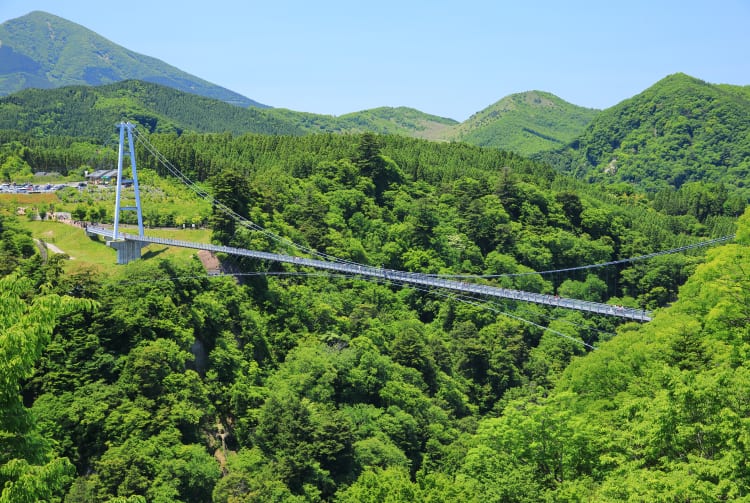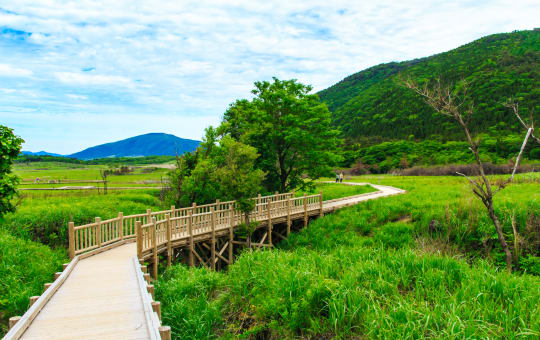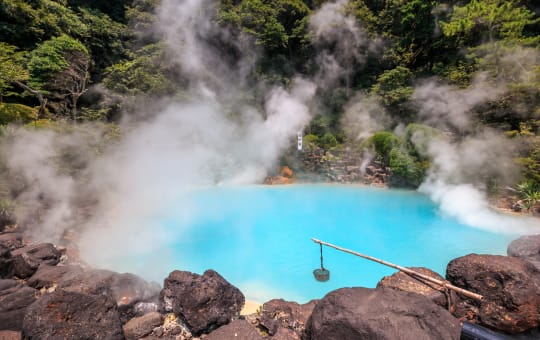Suspended high in mid-air over a remote forested valley
Traversing the Kokonoe Yume Grand Suspension Bridge in western Oita Prefecture is like walking across the sky. Japan's longest and loftiest pedestrian bridge, it presents panoramic scenes of Oita's verdant countryside, including two waterfalls, the Naruko River and the valley 173 meters below.
The nearby Kuju mountain range and Handa highlands are great places to trek, and this area also boasts the Tadewara Wetlands and several onsen, chief among them Kurokawa Onsen.
Don't Miss
- Shindo no taki and Medaki, among Japan's most beautiful falls
- The abundant wildlife of the expansive Narukogawa Keikoku forest
- Mt. Mimata and Mt. Waita in the Kuju mountain range
How to Get There
JR Oita Station is served by the Kyudai, Hohi and Nippo Main lines, offering access to much of Kyushu.
Take the Kyudai Main line train to Bungo-Nakamura Station and catch a local bus to the bridge.
Crossing en masse, and you'll see why
The bridge is designed to hold 1,800 people at once, which may seem like a lot until you consider that 300,000 crossed it during the first month it was open in 2006. Views from this bridge are impressive year-round. The best time to visit is between April and early December, particularly from mid-April to May to see the lush green spring foliage, and in November for the fiery autumn colors.
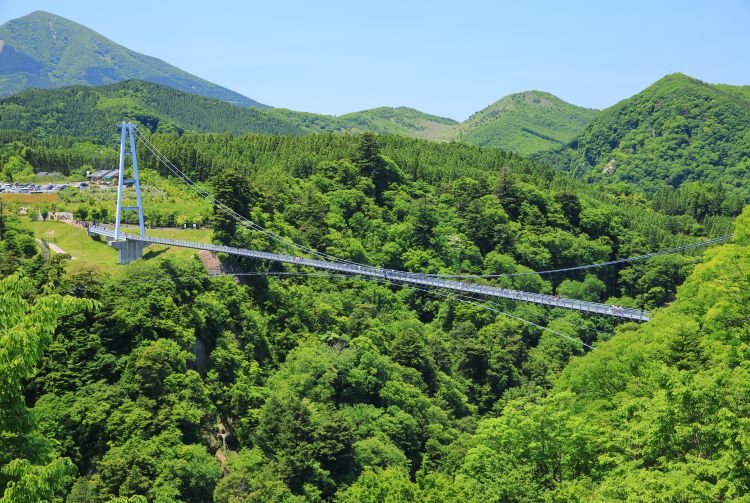
Exploring the mountains, highlands and wetlands
Located in Aso-Kuju National Park, Handa Highland's hills range in altitude from 800 to 1,200 meters, wonderful countryside for wandering across that is close to several hot springs, including Kanno Jigoku, Ukenokuchi and Chojabaru. The Kuju mountain range offers plenty of hiking possibilities both casual and demanding.
The Tadewara Wetlands , meanwhile, make up an ecosystem lovingly preserved and protected to the west of the Kuju mountains. It features many rare and endangered species of flora, which are all detailed in the visitors center in English.
Helpful services
Free wheelchair rental is available from the Nakamura area tourist information center, and at the ticket counter in the Kitagata area. There are also free lockers, ample parking, vending machines, toilets and a tourist information center with Wi-Fi.
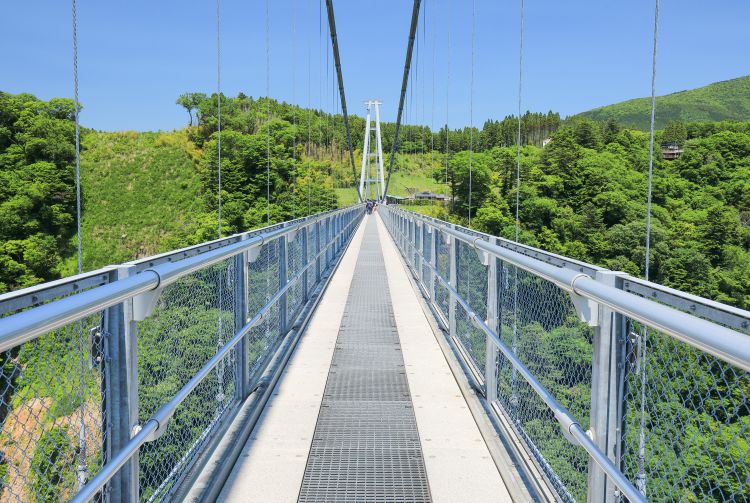
A few restrictions
Adverse weather conditions, a natural disaster or busy periods may keep you from crossing the bridge. Activities such as flying drones, sitting, running and using umbrellas are not allowed on the bridge.
Due to the grate on the floor of the bridge, avoid using thin walking canes and walking in high heels.

Not just a bridge
The city of Oita is known for its abundance of fresh produce and friendly locals. If nature and home comforts are your thing, head here for a couple of days. There are plenty of bubbling onsen to relax in, and the Japanese monkey inhabited Mt. Takasaki is close by.
* The information on this page may be subject to change due to COVID-19.




























































